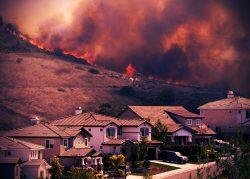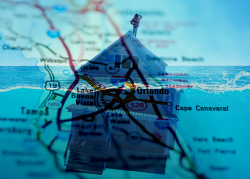NIMBYs and YIMBYs have joined forces to rein in urban sprawl in fire- and flood-prone regions across the state.
The coalition of environmentalists and housing advocates are backing a bill that seeks to slow growth in high-risk areas while supporting more apartments in cities, the San Jose Mercury News reported.
The legislation, Assembly Bill 68, wouldn’t ban new housing in regions at risk of fires and floods — or prevent people in those areas from rebuilding their homes after disaster strikes.
Advocates say it would dial back the kind of large master-planned developments that have popped up in the Oakland hills, Tassajara Valley in Contra Costa County and Morgan Hill and Gilroy in the South Bay. Building industry officials are prepared to fight the bill.
San Diego Assemblyman Chris Ward, who wrote the bill, said the goal is “to try and limit, and as a last resort suspend, further sprawl into areas that are putting families in harm’s way.”
The legislation — co-sponsored by California YIMBY and the Nature Conservancy — would create defined “hazard areas” across the state. It would then require local officials seeking to approve more homes than their general plans allow in those locations to first show the same number of units couldn’t be built elsewhere in the city or county.
Since 2018, devastating wildfires in Lake Tahoe, Wine Country, the Sacramento Valley, the Santa Cruz Mountains and other parts of the state have burned thousands of homes and killed dozens of people. This year, severe flooding has hit the San Joaquin Valley and Central Coast, damaging hundreds of homes in the Monterey County farm town of Pajaro.
Across California, a quarter of all residents now live in areas at risk of catastrophic fire, according to state officials. One in five now live in areas vulnerable to floods, according to the Public Policy Institute of California.
Housing advocates blame policies restricting denser development in cities and suburbs for pushing new housing farther into wooded foothills and open floodplains where land is less expensive and space is plentiful.
That not only puts more people in danger, advocates and environmentalists say, but distresses local ecosystems and boosts climate-warming vehicle emissions.
“We have to deprioritize building homes in hazard zones and instead prioritize housing closer to jobs and services, so people can spend more time with their families — and less time in polluting traffic,” Melissa Breach, chief operating officer of California YIMBY, said in a statement.
While maps of the proposed hazard areas are still being determined, they could cover wide swaths of the Bay Area, from the East Bay hills to the Santa Clara Valley and much of the Peninsula.
The bill would require officials to streamline and approve larger “naturally affordable” multifamily homes within walking distance of jobs, schools, transit, parks and shopping centers.
The building industry, however, appears poised to push back hard on the bill.
Dan Dunmoyer, CEO of the California Building Industry Association, said the bill would drive up land values by limiting where new housing is allowed, making construction in rural and urban areas alike even more costly.
He said building homes anywhere in California comes with an inherent risk, pointing to the threat of earthquakes.
But just as newer housing is built to better withstand violent tremors, he said updated building codes have also made homes more fire resistant. When it comes to large subdivisions, he said developers can build roads, parks and golf courses around tract homes to shield them from wildfires.
“It’s disappointing to have a YIMBY group come out in favor of a bill that says YIMBY, but only in certain places,” Dunmoyer said.
California Attorney General Rob Bonta last year released stricter guidelines for how and where developers should be allowed to build in fire-prone areas. His office has participated in several lawsuits to block large projects in areas with a history of wildfires.
In 2021, a state bill to ban development in high fire-risk areas stalled out amid heavy opposition from the building industry.
In 2020, Gov. Gavin Newsom vetoed a measure that would have mandated more evacuation routes, vegetation management and strict building codes for new developments in fire-prone regions. He said the bill would have created “a loophole for regions to not comply with their housing requirements.”
— Dana Bartholomew
Read more



